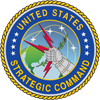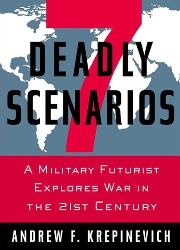
7 Deadly Scenarios: A Military Futurist Explores War in the 21st Century
A global pandemic finds millions swarming across the U.S. border.
Major U.S. cities are leveled by black-market nukes.
China's growing civil unrest ignites a global showdown.
Pakistan's collapse leads to a hunt for its nuclear weapons.
What if the worst that could happen actually happens? How would we respond? Are we ready?
Author: Andrew F. Krepinevich, Jr. is a defense policy analyst, currently executive director of the Center for Strategic and Budgetary Assessments. His influential book, The Army and Vietnam, contends that the United States could have won the Vietnam War had the Army adopted a small-unit pacification strategy in South Vietnam's villages, rather than conducting search and destroy operations in remote jungles. Today, he criticizes the counterinsurgency approaches being employed in the Iraq War. He is a West Point graduate.

One Second After
New York Times best-selling author William R. Forstchen now brings us a story which can be all too terrifyingly real...a story in which one man struggles to save his family and his small North Carolina town after America loses a war, in one second, a war that will send America back to the Dark Ages...A war based upon a weapon, an Electro Magnetic Pulse (EMP). A weapon that may already be in the hands of our enemies.
Author: William R. Forstchen has a Ph.D. from Purdue University with specializations in Military History and the History of Technology. He is a Faculty Fellow and Professor of History at Montreat College. He is the author of over forty books, including the New York Times bestselling series Gettysburg and Pearl Harbor (coauthored with Newt Gingrich), as well as the award-winning young adult novel We Look Like Men of War. He has also authored numerous short stories and articles about military history and military technology. His interests include archaeological research on sites in Mongolia, and as a pilot he owns and flies an original World War II "recon bird."

Thinking Beyond the Unthinkable: Harnessing Doom from the Cold War to the Age of Terror
September 11 was a product of bad intelligence and wrongheaded expectations about al-Qaeda's motivations, intentions, resourcefulness, and capabilities. But it also sprang from a failure of the kind of predictive strategic thinking that kept the world from becoming atomic rubble in the fifties and sixties. In Thinking Beyond the Unthinkable, strategic analyst Jonathan Stevenson illuminates both the genius of nuclear deterrence and Mutually Assured Destruction (MAD), plus the blind spots that limited the great Cold War civilian strategists' intellectual fertility and flexibility.
Author: Jonathan Stevenson is a professor of strategic studies at the Naval War College. He spent most of the 1990s in sub-Saharan Africa and Northern Ireland, and his previous books include “We Wrecked the Place”: Contemplating an End to the Northern Irish Troubles and Losing Mogadishu. He has published articles in Foreign Affairs, Foreign Policy, and The National Interest, as well as in The New York Times, The Boston Globe, The Wall Street Journal, and The New Republic.
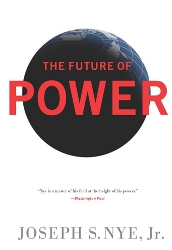
The Future of Power
In the era of Kennedy and Khrushchev, power was expressed in terms of nuclear missiles, industrial capacity, numbers of men under arms, and tanks lined up ready to cross the plains of Eastern Europe. By 2010, none of these factors confer power in the same way: industrial capacity seems an almost Victorian virtue, and cyber threats are wielded by non-state actors. Politics changed, and the nature of power—defined as the ability to affect others to obtain the outcomes you want—had changed dramatically. Power is not static; its story is of shifts and innovations, technologies and relationships.
Author: Joseph Samuel Nye, Jr. is the co-founder, along with Robert Keohane, of the international relations theory neoliberalism. Together with Keohane, he developed the concepts of asymmetrical and complex interdependence. They also explored transnational relations and world politics in an edited volume in the 1970s. More recently, he pioneered the theory of soft power. His notion of "smart power" became popular with the use of this phrase by members of the Clinton administration, and more recently the Obama Administration. Nye is currently University Distinguished Service Professor at Harvard University, and previously served as dean of Harvard University's John F. Kennedy School of Government. He also serves as a Guiding Coalition member for the Project on National Security Reform.
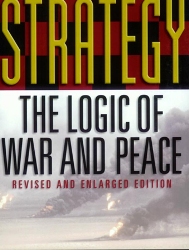
Strategy: The Logic of War and Peace
In this widely acclaimed work, now revised and expanded, Luttwak unveils the peculiar logic of strategy level by level, from grand strategy down to combat tactics. Having participated in its planning, Luttwak examines the role of air power in the 1991 Gulf War, then detects the emergence of "post-heroic" war in Kosovo in 1999--an American war in which not a single American soldier was killed.
Author: Edward N. Luttwak is senior associate (non-resident) at the Center for Strategic and International Studies. He has served as a consultant to numerous government offices including: the Office of the Secretary of Defense, the National Security Council, the U.S. Department of State, the U.S. Army, Navy, and Air Force. He is the author of numerous books and articles including Strategy and Politics, The Endangered American Dream, and Turbo-Capitalism: Winners and Losers in the Global Economy.
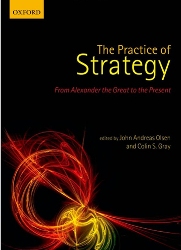
The Practice of Strategy
The Practice of Strategy focuses on grand strategy and military strategy as practiced over an extended period of time and under very different circumstances, from the campaigns of Alexander the Great to insurgencies and counter-insurgencies in present-day Afghanistan and Iraq. It presents strategy as it pertained not only to wars, campaigns, and battles, but also to times of peace that were over-shadowed by the threat of war.
Author: Colin S. Gray is a British-American strategic thinker and professor of International Relations and Strategic Studies at the University of Reading, where he is the director of the Centre for Strategic Studies. In addition, he is a Senior Associate to the National Institute for Public Policy. Author: John Andreas Olsen is the dean of the Norwegian Defence University College, head of its division for strategic studies, and visiting professor of operational art and tactics at the Swedish National Defence College. He is an active-duty colonel in the Norwegian Air Force and has lectured widely in Europe and the United States.

The Dragon's Quantum Leap
The Dragon's Quantum Leap intends to peel back the transformation process and uncover the impact of new modes of thought on several key segments of military development (culture, stratagems, crisis management, deception, and reconnaissance among other elements) that digital age thought is affecting. It expands the scope but not the basic theoretical theme of the author's two previous works on Chinese information warfare concepts.
Author: Timothy L. Thomas is a retired US Army Lieutenant Colonel. He was a US Army Foreign Area Officer who specialized in Soviet/Russian studies. He is an adjunct professor at the Us Army's Eurasian Institute and an adjunct lecturer at the USAF Special Operations School. He is the author of several publications on Information Warfare including "Decoding the Virtual Dragon: Critical Evolutions in the Science and Philosophy of China's Information Operations and Military Strategy" and "Dragon Bytes: Chinese Information-War Theory and Practice."

On China
In On China, Kissinger examines key episodes in Chinese foreign policy from the classical era to the present day, with a particular emphasis on the decades since the rise of Mao Zedong. He illuminates the inner workings of Chinese diplomacy during such pivotal events as the initial encounters between China and modern European powers, the formation and breakdown of the Sino-Soviet alliance, the Korean War, Richard Nixon's historic trip to Beijing, and three crises in the Taiwan Straits. Drawing on his extensive personal experience with four generation of Chinese leaders, he brings to life towering figures such as Mao, Zhou Enlai, and Deng Xiaoping, revealing how their different visions have shaped China's modern destiny.
Author: Heinz Alfred "Henry" Kissinger is a German-born American academic, political scientist, diplomat, and businessman. He is a recipient of the Nobel Peace Prize. He served as National Security Advisor and later concurrently as Secretary of State in the administrations of Presidents Richard Nixon and Gerald Ford.

The Great American Gamble: Deterrence Theory and Practice from the Cold War to the 21st Century
Dr. Keith Payne has painstakingly and skillfully developed a masterful analysis of American Cold War nuclear deterrence theory to practice with insightful critique and prescriptive considerations for the post-Cold War era. Keith utilizes a vast amount of previously classified information to facilitate the comprehension of high-level key deterrence decisions. A 'must read' for defense policy professionals, scholars, and concerned citizens. (review of the book by ADM Henry Chiles Jr., USN (ret.), former Commander in Chief, U.S. Strategic Command)
Author: Dr. Keith Payne is President and co-founder of the National Institute for Public Policy, a nonprofit research center located in Fairfax, Virginia. At National Institute, he directs and participates in studies on U.S. strategic policy and force posture issues, arms control, BMD, and Russian foreign policy. Additionally, Dr. Payne is a member of the Strategic Advisory Group for United States Strategic Command.

The Nuclear Express
This is a political history of nuclear weapons from the discovery of fission in 1938 to the nuclear train wreck that seems to loom in our future. It is an account of where those weapons came from, how the technology surprisingly and covertly spread, who is likely to acquire those weapons next and most importantly why.
Author: Thomas C. Reed is a former nuclear weapons designer at Lawrence Livermore National Laboratory, political manager for Ronald Reagan's gubernatorial contests, Secretary of the Air Force under presidents Ford and Carter, Special Assistant to President Reagan for National Security Policy, and a successful businessman. Danny B. Stillman is a Los Alamos physicist with decades of experience in nuclear design, diagnostics, and testing. For thirteen years Stillman directed the Los Alamos Technical Intelligence Division; at the end of that tour he was awarded the Intelligence Community Seal Medallion.
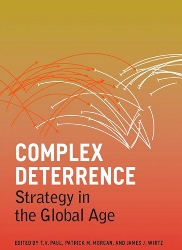
Complex Deterrence: Strategy in the Global Age
As the costs of a preemptive foreign policy in Iraq have become clear, strategies such as containment and deterrence have been gaining currency among policy makers. This comprehensive book offers an agenda for the contemporary practice of deterrence—especially as it applies to nuclear weapons—in an increasingly heterogeneous global and political setting.
Author: T.V. Paul is James McGill Professor of International Relations in the Department of Political Science at McGill University, Montreal, Canada, where he has been teaching since 1991. Paul specializes in International Relations, especially international security, international conflict & conflict resolution, regional security and South Asia.
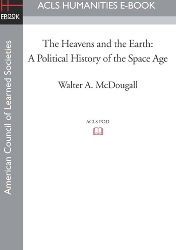
The Heavens and the Earth: A Political History of the Space Age
"The definitive, surprising and highly readable history of the U.S. space program. Forget visionary rhetoric about humans' need to explore the next frontier: McDougall demonstrates how NASA's moon missions grew directly from Hitler's V-2 rocket project at Pennemunde and were all about the classic military necessity of controlling the high ground -- in this case the really high ground... [One of] the five best books I have read about the U.S. space program." (Mark Bowden, author of Black Hawk Down)
Author: Walter A. McDougall is Professor of History and the Alloy-Ansin Professor of International Relations. A graduate of Amherst College and a Vietnam veteran, he received his Ph.D. from the University of Chicago in 1974 and taught at U.C. Berkeley for 13 years before coming to Penn to direct its International Relations Program, which now has 350 majors. He won the Pulitzer Prize in 1986 for The Heavens and the Earth.

Astropolitik: Classical Geopolitics in the Space Age
This book identifies and evaluates the relationship between outer-space geography and geographic position (astrogeography), and the evolution of current and future military space strategy.
Author: Dr. Everett C. Dolman is Professor of Comparative Military Studies at the US Air Force's School of Advanced Air and Space Studies (SAASS). His focus is on international relations and theory, and he has been identified as Air University's first space theorist. Dr. Dolman began his career as an intelligence analyst for the National Security Agency, and moved to the United States Space Command in 1986. In 1991, he received the Director of Central Intelligence's Outstanding Intelligence Analyst award.
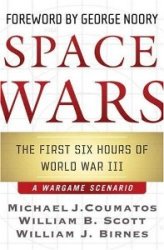
Space Wars: The First Six Hours of World War III, A War Game Scenario
This book depicts how the first hours of World War III might play out in the year 2010. The authors take the reader inside U.S. Strategic Command, where top military commanders, space-company executives, and U.S. intelligence experts are conducting a DEADSATS II wargame, exploring how the loss of critical satellites could lead to nuclear war. The players don't know that the war they are gaming has already begun, miles above them in the lifeless, silent cold of space.
Author: Michael Coumatos is a former U.S. Navy test pilot, ship's captain, and commodore; U.S. Space Command director of wargaming; and a government counterterrorism advisor. William B. Scott is a retired bureau chief of Aviation Week and Space Technology and a nine-year Air force veteran who served as aircrew on nuclear sampling missions. William J. Birnes is the New York Times bestselling coauthor of The Day After Roswell and Worker in the Light.

Inside Cyber Warfare: Mapping the Cyber Underworld
This book provides fascinating and disturbing details on how nations, groups, and individuals throughout the world are using the Internet as an attack platform to gain military, political, and economic advantages over their adversaries. Discusses how sophisticated hackers, working on behalf of states or organized crime, patiently play a high-stakes game targeting anyone, regardless of affiliation or nationality.
Author: Jeffrey Carr is a cyber intelligence expert, columnist for Symantec's Security Focus, and author who specializes in the investigation of cyber attacks against governments and infrastructures by State and Non-State hackers. Mr. Carr is the Principal Investigator for Project Grey Goose, an Open Source intelligence investigation into the Russian cyber attacks on Georgia in August, 2008. His work has been quoted in The New York Times, The Washington Post, The Guardian, BusinessWeek, Parameters, and Wired.
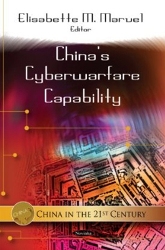
China's Cyberwarfare Capability: China in the 21st Century
The government of the People's Republic of China (PRC) is a decade into a sweeping military modernisation program that has fundamentally transformed its ability to fight high tech wars. The Chinese military, using increasingly networked forces capable of communicating across service arms and among all echelons of command, is pushing beyond its traditional missions focused on Taiwan and toward a more regional defence posture. This book presents a comprehensive open source assessment of China's capability to conduct computer network operations (CNO) both during peacetime and periods of conflict, and will hopefully serve as a useful reference to policymakers, China specialists, and information operations professionals.
Author:

The Dark Visitor: Inside the World of Chinese Hackers
This book attempts to analyze the history, ideology, organization, exploits, and political motivations of the Chinese hacker network. Whenever possible, the information contained herein has been taken directly from the Chinese hacker organization itself or from interviews with individual members.
Author: Scott J. Henderson retired from the US Army after 20 years of service in the intelligence community as a Chinese linguist. He holds a Bachelor of Science degree with an emphasis on Chinese studies and graduated from the Defense Language Institute in Monterey California. In 1997, he was on special assignment to the US Embassy in the People's Republic of China.
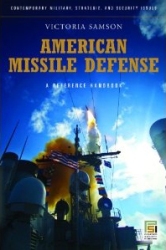
American Missile Defense: A Guide to Issues
Missile defense has been trumpeted as a way to protect the United States from a massive missile attack, but the reality, this book argues, is that our missile defense is not nearly as effective nor developed as people have been led to believe. In American Missile Defense: A Guide to the Issues Victoria Samson brings a decade of experience to bear in an in-depth examination of missile defense as it has been envisioned and as it is actually being developed, clarifying misconceptions and laying out what a missile defense system can and cannot do.
Author: Victoria Samson joined the Center for Defense Information in November 2001. Her areas of interest include missile defense, nuclear reductions, and emerging weapons technologies. Samson, the author of numerous op-eds, analytical pieces, journal articles, and electronic updates on missile defense and space security matters, provides an objective assessment of U.S. policy.
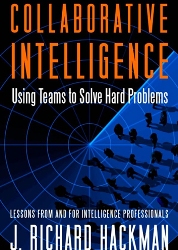
Collaborative Intelligence: Using Teams to Solve Hard Problems
This book draws on recent research findings as well as Harvard Professor Richard Hackman's own experience as an intelligence community researcher and advisor to show how leaders can create an environment where teamwork flourishes. Hackman identifies six enabling conditions – such as establishing clear norms of conduct and providing well-timed team coaching – that increase the likelihood that teams will be effective in any setting or type of organization. Although written explicitly for intelligence, defense, crisis management, and law enforcement professionals it will also be valuable for improving team success in all kinds of leadership, management, service, and production teams in business, government, and nonprofit enterprises.
Author: J. Richard Hackman is Edgar Pierce Professor of Social and Organizational Psychology. He received his bachelor's degree in mathematics from MacMurray College and his doctorate in social psychology from the University of Illinois. Hackman teaches and conducts research on a variety of topics in social and organizational psychology, including team performance, leadership effectiveness, and the design of self-managing teams and organizations. His most recent books are Leading Teams: Setting the Stage for Great Performances, which in 2004 won the Academy of Management's Terry Award for the most outstanding management book of the year, and Senior Leadership Teams: What It Takes to Make Them Great (with Ruth Wageman, Debra Nunes, and James Burruss).
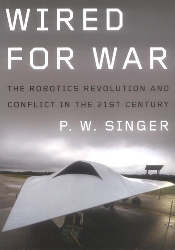
Wired for War: The Robotics Revolution and Conflict in the 21st Century
A military expert reveals how science fiction is fast becoming reality on the battlefield, changing not just how wars are fought, but also the politics, economics, laws, and ethics that surround war itself. He explores the greatest revolution in military affairs since the atom bomb—the advent of robotic warfare.
Author: P. W. Singer is an American political scientist, an international relations scholar and a preeminent specialist on 21st century warfare. He is currently a Senior Fellow at the Brookings Institution, where he is Director of the 21st Century Defense Initiative.
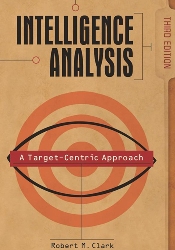
Intelligence Analysis: A Target-Centric Approach
As Americas enemies have changed and evolved, the American intelligence community has been forced to find more effective methods of managing intelligence analysis. Old hierarchical models of collection and analysis must give way to horizontal, networked solutions. In Intelligence Analysis, Robert M. Clark explains that a collaborative, target-centric approach allows for more effective analysis, while better meeting customer needs.
Author: Robert M. Clark has been an intelligence analyst for 36 years, currently serving as an independent consultant assessing threats to U.S. space systems. He helped develop and is a faculty member for the Intelligence Community Officers Course. Clark is the former president and CEO of the Scientific and Technical Analysis Corporation. He served in the United States Air Force as an electronics warfare officer and intelligence officer, reaching the rank of lieutenant colonel, and in the CIA as an analyst and as the chief of the Directorate of Intelligences Analytic Support Group.

Intelligence: From Secrets to Policy
Intelligence veteran Mark M. Lowenthal details how the intelligence community's history, structure, procedures, and functions affect policy decisions. With his friendly prose, he demystifies a complicated and complex process. Rich with examples and anecdotes, Intelligence also includes bolded key terms, an acronym list, suggested readings and websites, and a list of major intelligence reviews or proposals.
Author: Mark M. Lowenthal has thirty years of experience as an intelligence official in the executive and legislative branches of government and in the private sector. He retired from government service in 2005 after serving for three years as the assistant director of central intelligence for analysis and production and vice chairman of the National Intelligence Council for Evaluation. Dr. Lowenthal is the president and CEO of the Intelligence & Security Academy, LLC, a national security education, training and consulting firm. He is also an adjunct professor at Columbia University.
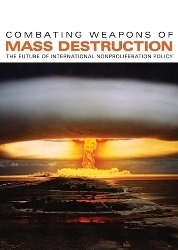
Combating Weapons of Mass Destruction: The Future of International Nonproliferation Policy
This book pairs real-world case histories with discussions of the latest problems and risks affecting weapons of mass destruction and their spread. It is a collection of articles from experts in nonproliferation studies who examine special challenges and offer directions for policy and law making, making for an outstanding reference to any discussion of nuclear or military might.
Author: Nathan E. Busch is an associate professor of political science at Christopher Newport University and author of No End in Sight: The Continuing Menace of Nuclear Proliferation. Daniel H. Joyner is an associate professor at the University of Alabama Law School and editor of Non-proliferation Export Controls: Origins, Challenges, and Proposals for Strengthening.

Stormjammers: The Extraordinary Story of Electronic Warfare Operations in the Gulf War
When the U.S. went to war in Iraq during the first Gulf War, Robert Stanek was there. He lived and breathed combat from the opening days of the war to its end and beyond. In this book, this bestselling author chronicles the military life, his experiences in the war with vivid accounts of combat training before the war, reflections on life, family, duty, honor, and love, and remembrances of combat missions into the heart of Baghdad. Candid and fast-paced like the best combat memoirs, Stanek focuses on the men and women he flew with, telling their stories as well as his own and creating what is ultimately an inspiring and uplifting story of the human spirit challenged by the agony and terror of war. Based on the inspiring true story, this is the only book about electronic warfare operations in Iraq written by a military flyer who was there. Robert Stanek's experiences in the Gulf War changed his life and helped drive his successful career as a writer and entrepreneur. To date, he has written and had published over 50 books. His books are sold all over the world and have been translated into many languages. His distinguished accomplishments during the Gulf War earned him nine medals, including our nation's highest flying honor, the Distinguished Flying Cross.
Author: Robert Stanek has been writing stories for nearly 30 years. He served in the U.S. Air Force for 11 years and has a bachelor's and master's degree from Hawaii Pacific University.
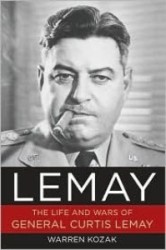
Lemay: The Life and Wars of General Curtis Lemay
Kozak's biography of Curtis Lemay and his outstanding competence as a leader and organizer of strategic airpower in World War II and during the cold war is convincingly presented. Kozak suggests that LeMay was utterly dedicated to the mission of destroying his country's enemies and to the men under his command charged with carrying out that mission. This led to what can only be called a certain lack of the social graces and a good many of what might charitably be called misinterpretations of where LeMay's patriotism led him.
Author: Warren Kozak is an author and journalist who has written for some of television's most respected news anchors. He was an on-air reporter for NPR and his work has appeared on PBS, ABC and CNN as well as in The Wall Street Journal, The Washington Post, The New York Sun and other newspapers and magazines. He was a winner of the prestigious Benton Fellowship at the University of Chicago.

A Fiery Peace in a Cold War: Bernard Schriever and the Ultimate Weapon
This is the intriguing history of the men who built America's ICBM program in the '50s and '60s. Gen. Bernard Schriever and his colorful band of military aides, civilian patrons, defense intellectuals and aerospace entrepreneurs are portrayed as a guerrilla insurgency fighting Pentagon red tape, and hostile Air Force brass. The book is a fascinating run-down of the engineering challenges posed by nuclear missiles, but the main action consists of bureaucratic intrigues, procurement innovations and epic briefings that catch the President's ear and open the funding spigots.
Author: Neil Sheehan is a Harvard graduate, Army veteran, and a former reporter for the New York Times. He received the Pulitzer Prize for A Bright Shining Lie.
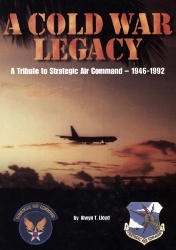
A Cold War Legacy: A Tribute to Strategic Air Command, 1946-1992
This "labor of love" is a veritable notebook of recollections, data, SAC stories, and vignettes reporting the various stages of SAC's evolution. Lloyd's detailed accounts of the commanders, people, places, weapons systems, and operational concepts are presented in a way to give personal identity and recognition to SAC's people as they went about making history. Everyone who served in the Command will find his or her circumstances reflected in this very complete historical work.
Author: Alwyn T. Al Lloyd is a Senior Service Engineer with the Boeing Commercial Airplane Company in Seattle, Washington. Al did a stint in the U.S. Air Force during the mid-1960s and returned to Boeing in Seattle where he has served in a number of engineering capacities. Al was featured on a History Channel program on the B-24, and most recently on the Discovery Channels Modern Marvels program on SAC. In addition, he is a consultant for several model manufacturers and other authors on airplane configurations and markings.


By Category
Strategic Thought:
- “7 Deadly Scenarios: A Military Futurist Explores War in the 21st Century”
- Andrews Krepinevich, 2009
- “One Second After”
- William R. Fortechen, 2008
- “Thinking Beyond the Unthinkable: Harnessing Doom from the Cold War to the Age of Terror”
- Jonathon Stevenson, 2008
- “The Future of Power”
- Joseph Nye, 2011
- “Strategy: The Logic of War and Peace”
- Edward Luttwak, 2002
- “The Practice of Strategy”
- Colin Gray, 2011
- “The Dragon’s Quantum Leap: Transforming from a Mechanized to an Informationized Force”
- Timothy Thomas & Tom Willhelm, 2009
- “On China”
- Henry Kissinger, 2011
Strategic Deterrence/Nuclear Operations:
- “The Great American Gamble: Deterrence Theory and Practice from the Cold War to the 21st Century”
- Keith Payne, 2008
- “The Nuclear Express”
- Thomas Reed, 2009
- “Complex Deterrence: Strategy in the Global Age”
- T.V. Paul, Patrick M. Morgan, & James J. Wirtz, 2009
Space Operations:
- “The Heavens and the Earth: A Political History of the Space Age”
- Walter McDougal, 2008
- “Astropolitik: Classical Geopolitics in the Space Age”
- Everett Dolman, 2001
- “Space Wars: The First Six Hours of World War III”
- Michael Coumatos, 2007
Cyberspace Operations:
- “Inside Cyber Warfare: Mapping the Cyber Underworld”
- Jeffrey Carr, 2009
- “China’s Cyberwarfare Capability: China in the 21st Century”
- Elisabette M. Marvel, 2010
- “The Dark Visitor: Inside the World of Chinese Hackers”
- Scott Henderson, 2011
Synchronization and Support:
- “American Missile Defense: A Guide to Issues”
- Victoria Samson, 2010
- “Collaborative Intelligence: Using Teams to Solve Hard Problems”
- Richard Hackman, 2011
- “Wired for War: The Robotics Revolution and Conflict in the 21st Century”
- P.W. Singer, 2009
- “Intelligence Analysis: A Target-Centric Approach”
- Robert Clark, 2009
- “Intelligence: From Secrets to Policy”
- Mark Lowenthal, 2008
- “Combating Weapons of Mass Destruction: The Future of International Nonproliferation Policy”
- Nathan Busch, 2009
- “Stormjammers: The Extraordinary Story of Electronic Warfare Operations in the Gulf War”
- Robert Stanke, 2006
Historical:
- “Lemay: The Life and Wars of General Curtis Lemay”
- Warren Kozak, 2009
- “A Fiery Peace in a Cold War: Bernard Schriever and the Ultimate Weapon”
- Neil Sheehan, 2009
- “A Cold War Legacy: A Tribute to Strategic Air Command, 1946-1992”
- Alwyn T. Lloyd, 2000
